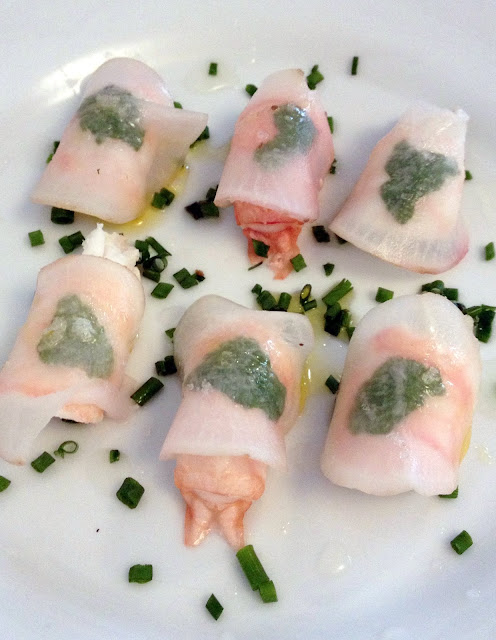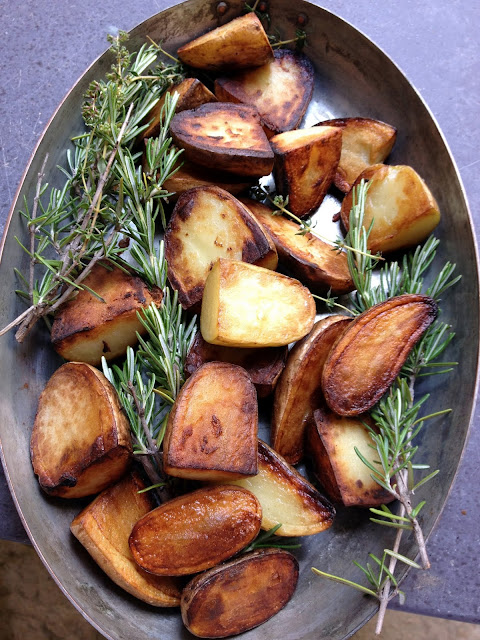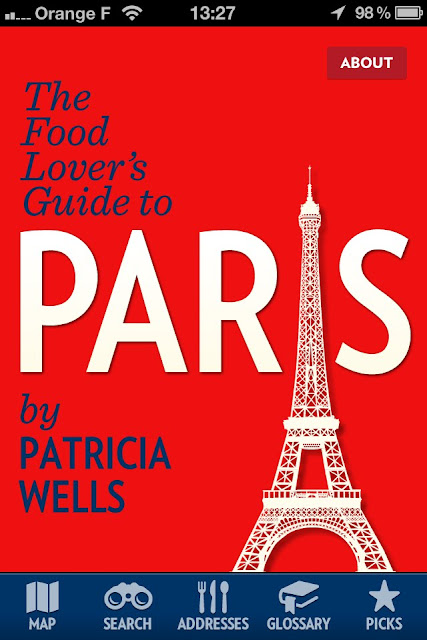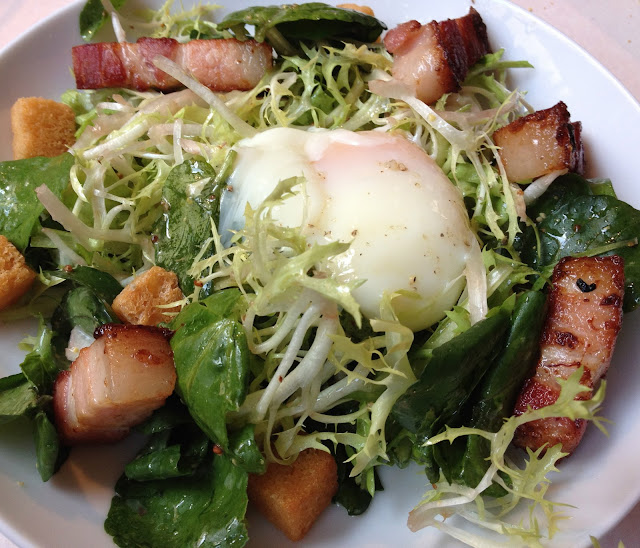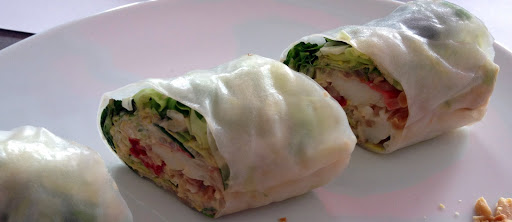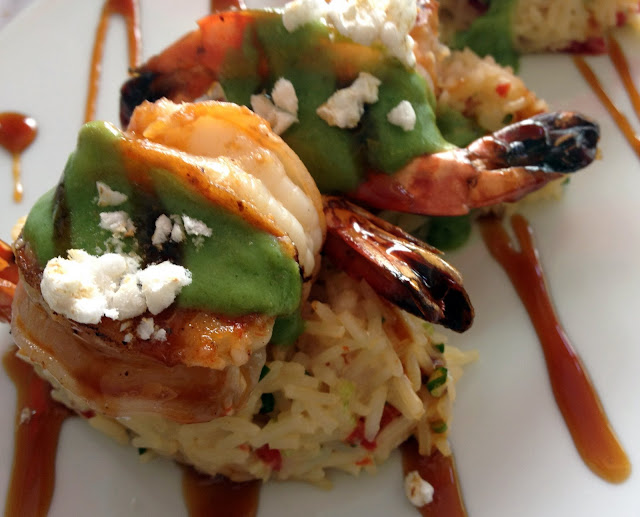There is a story behind each recipe. This one has several. The last day of our last Provence class one September, I sent a student to the vegetable garden for salads and herbs. She came back screaming “Your garden has been destroyed, everything is in disarray.” Sure enough. Big chunks had been chewed from the pumpkins. Zucchini plants had been pulled out, salads trampled, there were crater-like holes everywhere. The wild boar had had a midnight party. I didn’t cry because we were leaving the next day and wouldn’t be back for several months. But I laughed when I saw that they had not touched the arugula or the shiso! No gourmets, those boars. Fast foreward to Christmas: A neighbor who is a veteran hunter arrived at the door with a huge package of frozen wild boar, promising me that this was not the animal who had destroyed my garden. (How could he be sure?) I thought about re-gifting the creature but decided cooking it myself might be the best revenge. The daube was delicious.
Back in Paris, I decided to re-test the recipe with beef, and when I went to my local butcher and simply asked for 2 kg of beef for a daube, preferably two or three different cuts, he created a veritable still life. I arrived home with three cuts of beef, strips of caul fat, marrow bones and of course a garnish of fresh parsley! While the daube can be prepared with a single cut of meat, I like to use two or three, to allow for more complex flavors and textures. Careful searing of the meat is essential, to seal in juices. Flaming the wine adds another layer of flavor. A few marrow bones and strips of caul fat add a fabulous, silken texture to the final product. And while most French daube recipes recommend using either fresh tagliatelle or dried penne pasta, I prefer sheets of fresh pasta. They’re prettier on the plate, easier to eat, and more quickly absorb the silken sauce.
Equipment: A heavy-duty casserole with a lid; a 10-quart (10 l) pasta pot, fitted with a colander; 8 warmed, shallow soup bowls.
4 tablespoons extra-virgin olive oil
4 pounds beef (see Note) cut into 3-ounce (90 g) pieces
Fine sea salt
Freshly ground black pepper
1 bottle red wine, such as a Cotes-du-Rhone
1 quart (1 l) Homemade Chicken Stock (page 000)
2 large onions, peeled and halved crosswise, cut into thin rings
4 carrots, peeled and cut into think rounds
4 fresh or dried bay leaves
2 tablespoons tomato paste
Several strips of caul fat (optional)
Several marrow bones (optional)
Final garnish:
2 tablespoons unsalted butter
1 pound (500 g) fresh mushrooms
3 tablespoons freshly squeezed lemon juice
5 ounces (150 g) pancetta, rind removed, cut into matchsticks
Eight 5-inch (12.5 cm) squares of fresh pasta
3 tablespoons coarse sea salt
Parsley leaves, for garnish
In the casserole, heat the oil over moderately high heat until hot but not smoking. Add several pieces of the meat and brown them over moderate heat, regulating the heat to avoid scorching the meat. Do not crowd the pan and be patient: Good browning is essential for the meat to retain flavor and moistness. Thoroughly brown the meat on all sides in several batches, about 10 minutes per batch. As each batch is browned, use tongs (to avoid piercing the meat) to transfer the beef to a platter. Immediately season generously with salt and pepper. Return all the meat to the casserole. Add the wine and bring to a simmer. Flame the wine to burn off the alcohol. Be very careful here: Be sure nothing flammable is near the burner. It will take about 4 minutes to burn off the alcohol.
Add the stock, onions, carrots, bay leaves, and tomato paste. If using, add the caul fat and marrow bones. Cover and bring just to a simmer over moderate heat. Cook, covered, maintaining a very gentle simmer, until the meat is very tender, 3 to 4 hours. Stir from time to time to evenly coat the pieces of meat with the liquid. The sauce should be glossy and thick. Taste for seasoning. (The daube can be prepared a day in advance, covered and refrigerated.) Reheat at serving time.
Prepare the mushrooms: In a large, covered saucepan, combine the butter, mushrooms, and lemon juice. Cover and cook over moderate heat until tender, about 5 minutes. Keep the mushrooms warm while finishing the dish.
Prepare the pancetta: In a large skillet with no added fat, brown the pancetta over moderate heat until crisp and golden, about 5 minutes. With a slotted spoon, transfer the pancetta to several layers of paper towel to absorb the fat. Blot the top of the pancetta with several layers of paper towel to absorb any additional fat.
Fill the pasta pot with 8 quarts (8 l) of water and bring to a rolling boil over high heat. Add the coarse salt and the pasta, stirring to prevent the pasta from sticking. Cook until tender. Drain.
Transfer a square of pasta to each warmed shallow soup bowl. Arrange several pieces of meat, the carrots, mushrooms and bacon on top of the pasta. Garnish with parsley. Serve.
8 servings
Note: Use two to three different cuts of beef here, choosing from the top or bottom round, heel of round, shoulder arm or shoulder blade, neck, or short ribs of beef.
Wine suggestion: I love an elegant Syrah here, such as Domaine Vincent Paris’s ruby Cornas.


